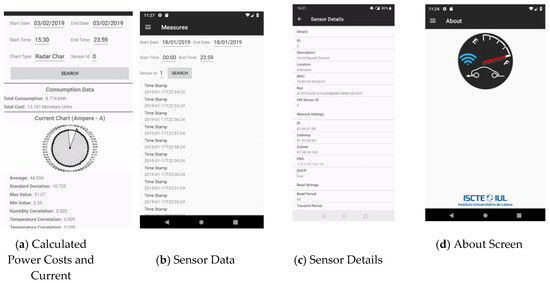
One of the big challenges related with electric vehicle (EV) market penetration is the charging
process, where the main problems are related to the lack of proper infrastructure in residential buildings
(condominiums) since they are not prepared for this new reality. Condominiums have the problem
of shared electricity, which does not meet the EV owner’s requirements. Based on new advances in
the Internet of Things (IoT) [1], and the associated sensing devices and communication platforms,
blockchain and information systems have the potential to create new solutions for these problems.
Another facet of this challenge is the problem associated with rental houses and the eventual need for
supporting EV charging in these cases.
In condominiums, unfortunately, there is a general reluctance regarding the installation of EV
charging stations that will only be used by a few homeowners [2]. In addition, there is also an issue
regarding the safety of the electrical installations, since they are not built proactively to support EV
charging stations, and, adapting the condominium electrical infrastructure will require not only that
a consensus between the majority of the owners is reached, which may be hard to achieve, but also
authorizations issued by the government building safety entities.
Taking into consideration that most residential buildings have shared spaces with common
electrical installations and are not prepared for the installation of new EV charging systems, this is
a barrier to EV uptake [3]. A study by Lopez-Behar et al. [4] identified four main problem domains in
the context of sharing EV charging solutions in buildings: unavailable charging infrastructure, building
limitations, regulation issues and parking availability.
In this work, we propose a new IoT-based approach for handling the EV charging process,
which can be used in the context of a shared energy infrastructure without requiring a supervision
entity to control the process.
The proposed solution is supported by a decentralized blockchain approach, running on a mobile
device app. Figure 1 shows an overview of a condominium with the proposed EV charging platform.
This work allows the following features: (1) A pre-registration with a local EV charging provider is not
required, avoiding the problem of dierent cards in dierent charging infrastructures (every charging
infrastructure has its own cards, and this is a problem for EV owners because they need several
charging cards when dierent providers are available); (2) it can work with digital currency using
a peer-to-peer (P2P) framework on the same homogeneous blockchain infrastructure and technology;
and (3) reduced cost (almost zero fees), because there is no requirement for a third party management
entity, apart from the condominium, which would create additional costs.
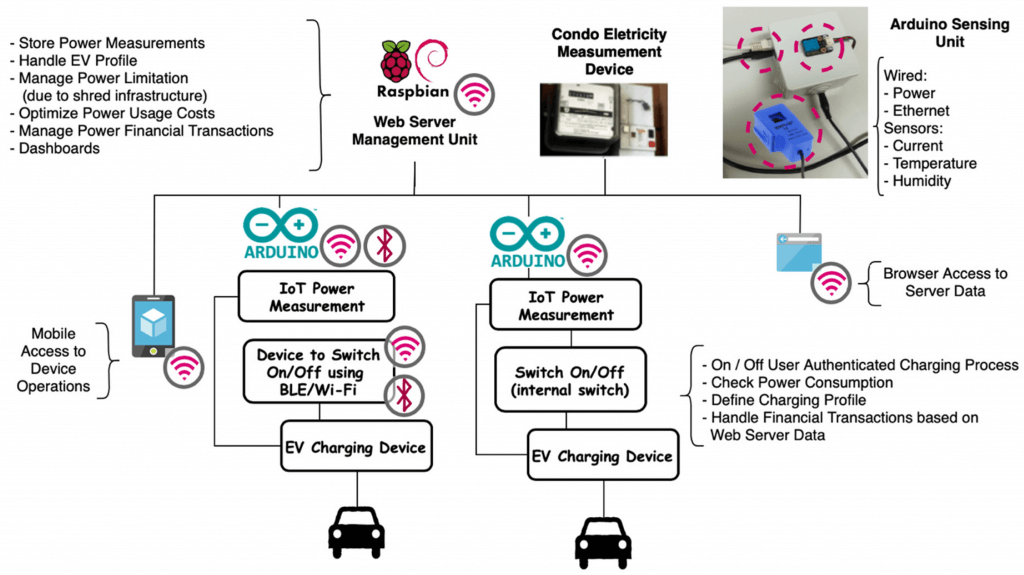
As illustrated in Figure 1, the major features of the proposed system are: (1) User authentication
with a mobile device using Bluetooth Low Energy (BLE) communication and, based on this, release of
energy for the EV charging process; and (2) energy consumption is monitored by Internet of Things (IoT)
sensors and a microcontroller board transmits the data to a web server (Raspberry Pi with Raspbian
operating system), which acts as the management unit, storing the data, handling the transactions in
a blockchain implementation and managing the charging according to the power limitations.
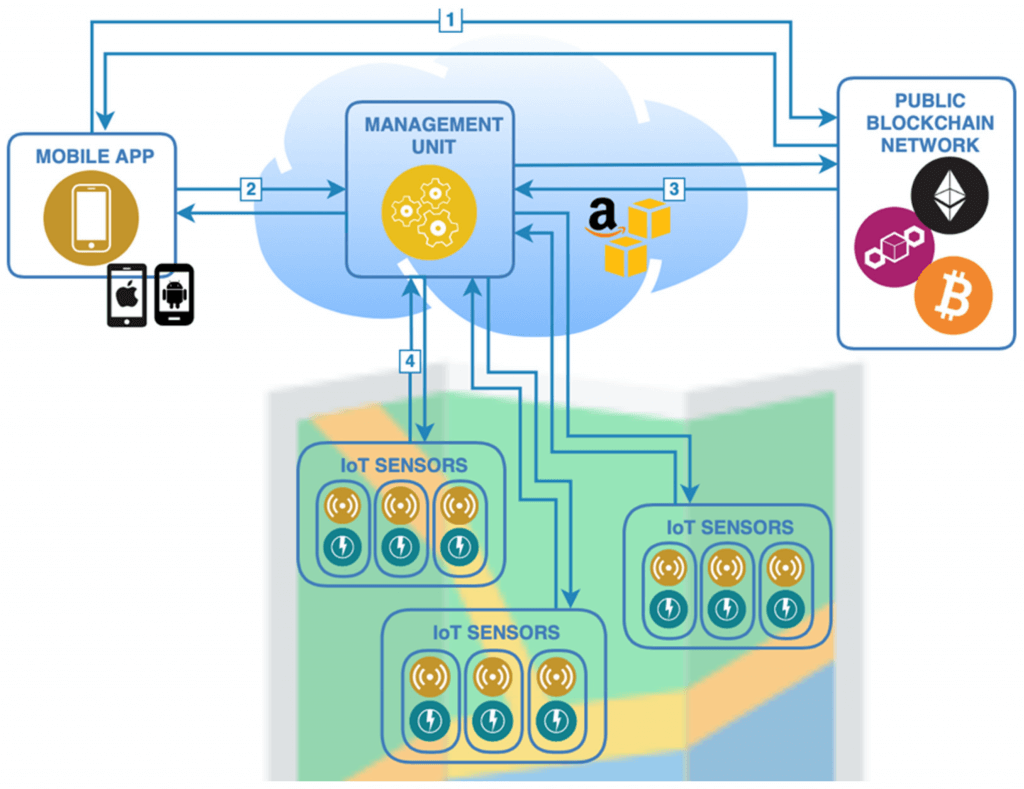
2. State of the Art
- Decentralization, since we need confirmation from some party of each block transaction without central control;
- Anonymity, since it allows for the authentication of transactions without giving up any personal information;
- Auditability, which is performed based on the fact that each of the transactions is recorded and validated with a timestamp, where users can trace the previous transactions by accessing any node in the distributed network.
3. Proposed Approach—Conceptual Model
- IoT Units. Sensor and power management units that support the interaction with the EV charger, being used to enable or disable it (on/off switch), to measure the amount of power consumed, gather environment temperature and humidity (complementary measures), and to upload all the information to the management unit. Implemented with COTS (commercial off-the-shelf) components, Arduino microcontrollers, actuators and sensors. Depending on the installation requirements, different components can be combined to set up the IoT Unit.
- Mobile App. The element that establishes the interaction between the EV owner and the platform, authenticates the user, starts/stops the charging process, and provides some common operations, such as configuration management, usage dashboards, transactions lists, etc.
- Management Unit. This element is the heart of the platform, providing not only all the backend services to support the required operations, but also the management console for the platform. In the prototype presented in this paper, the management unit was implemented using a Raspberry Pi, which also acts as a Wi-Fi access point, providing network access to the sensor units and to the mobile app, but it could also be implemented using a cloud computing platform.

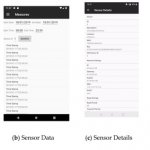
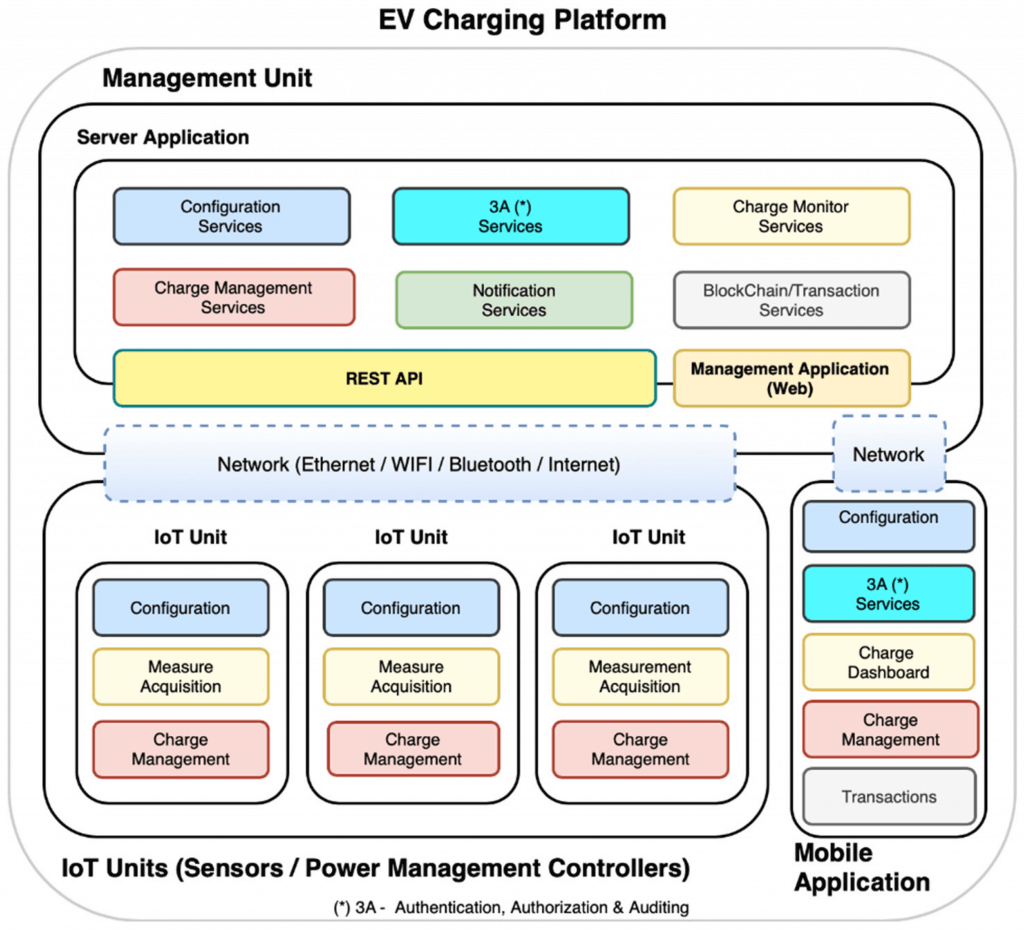
COMMENTS